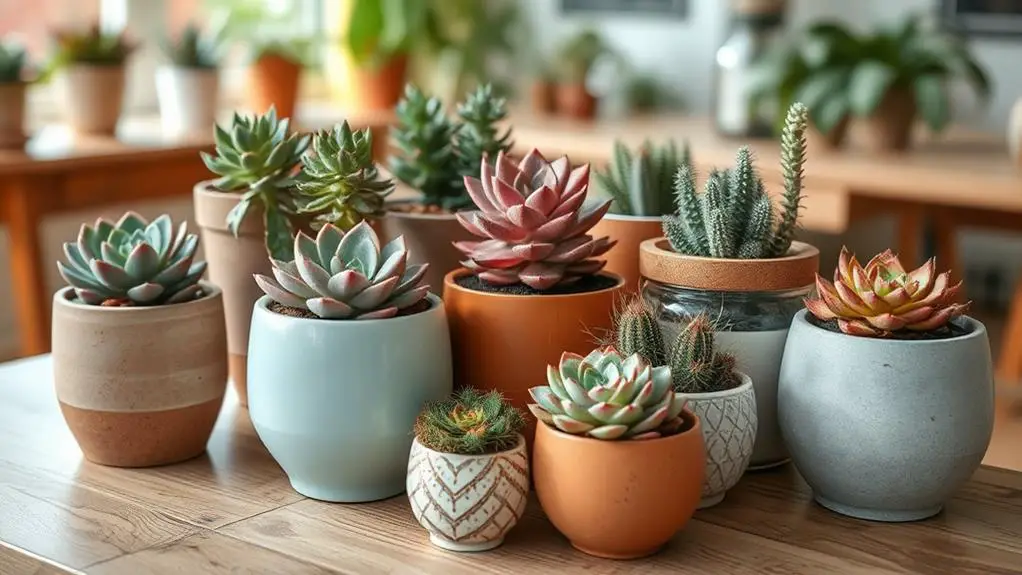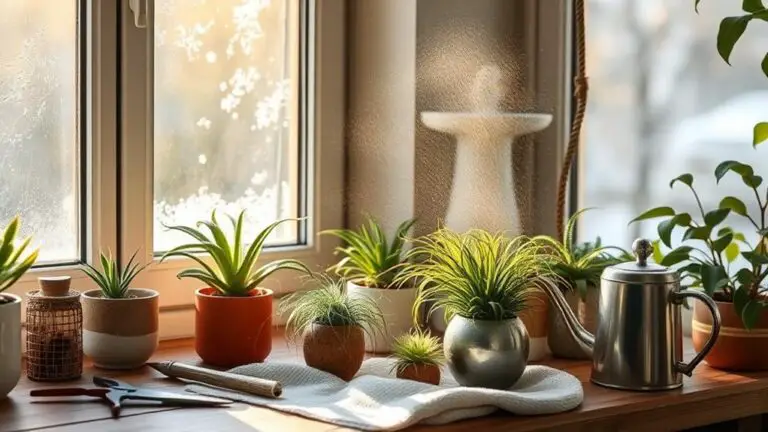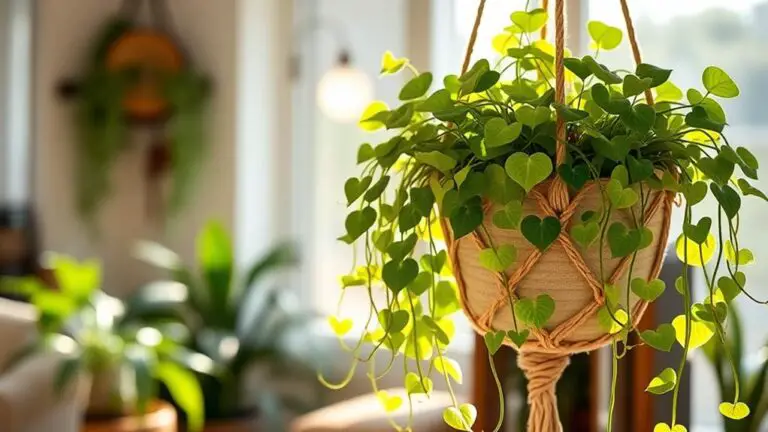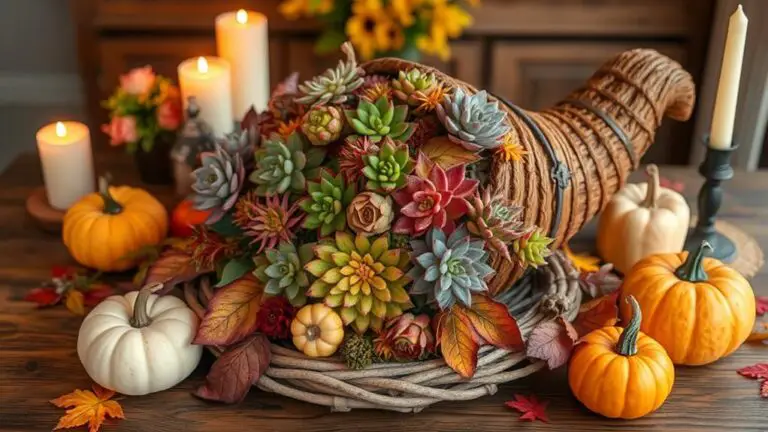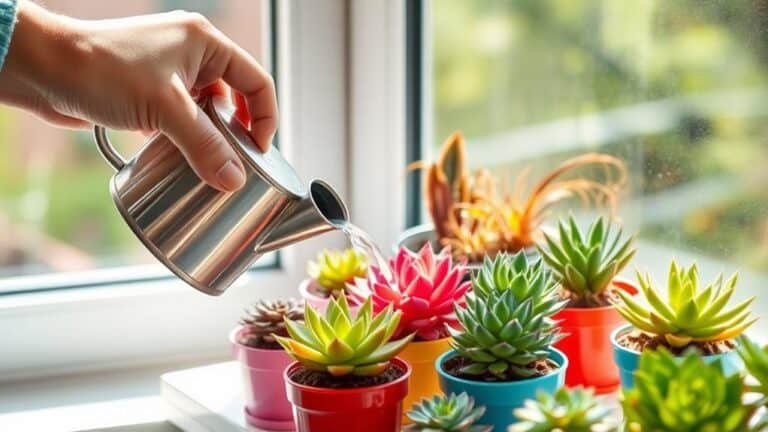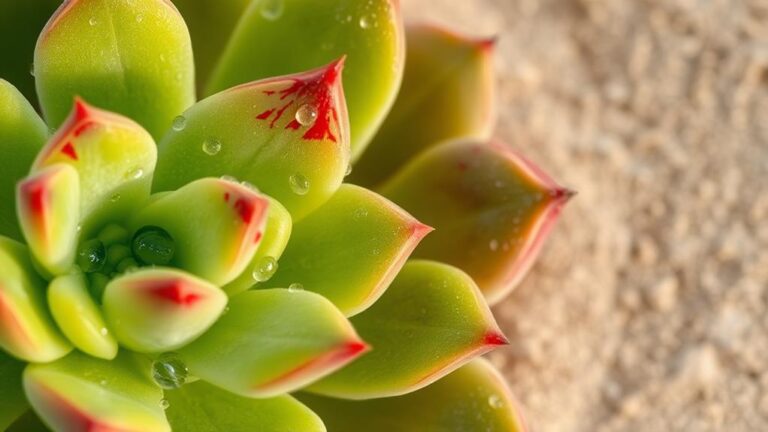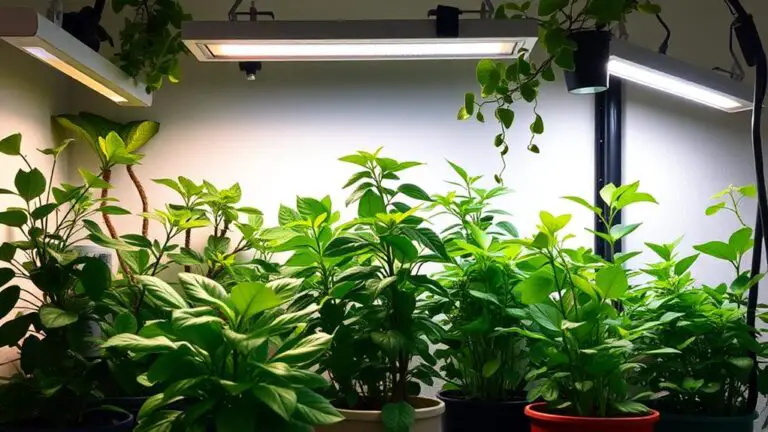Top 7 Tips to Choose the Right Pots for Your Succulents
When you're selecting pots for your succulents, you can't overlook the significance of proper drainage and size. A pot with good drainage will prevent root rot, a common issue for these resilient plants. Additionally, choosing a pot that's just about 10% larger than the plant guarantees room for growth without overwhelming the roots. The material of the pot also plays an essential role in root health, with breathable options like terra cotta being ideal. Matching pot colors to your succulent's hues can enhance the visual appeal of your space. But that's just the beginning—there's more to reflect on for thriving succulents.
Ensure Proper Drainage
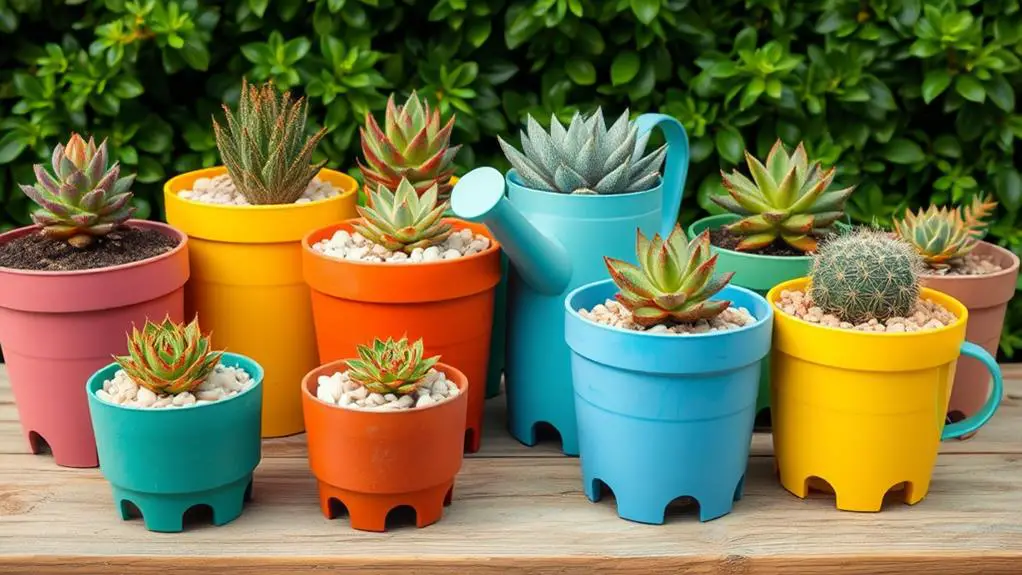
When it comes to choosing pots for your succulents, ensuring proper drainage is essential. Succulents need pots with drainage holes to let excess water escape, preventing root rot.
Without good drainage, watering becomes tricky, and overwatering can easily happen, harming your plants. To make care simpler, always choose pots with drainage holes. This is especially important for beginners because it creates a more forgiving environment.
Regularly check these holes for clogs to keep water flowing freely. Healthy roots are vital, and succulents thrive in well-draining conditions that mimic their natural habitats.
Consider Pot Size
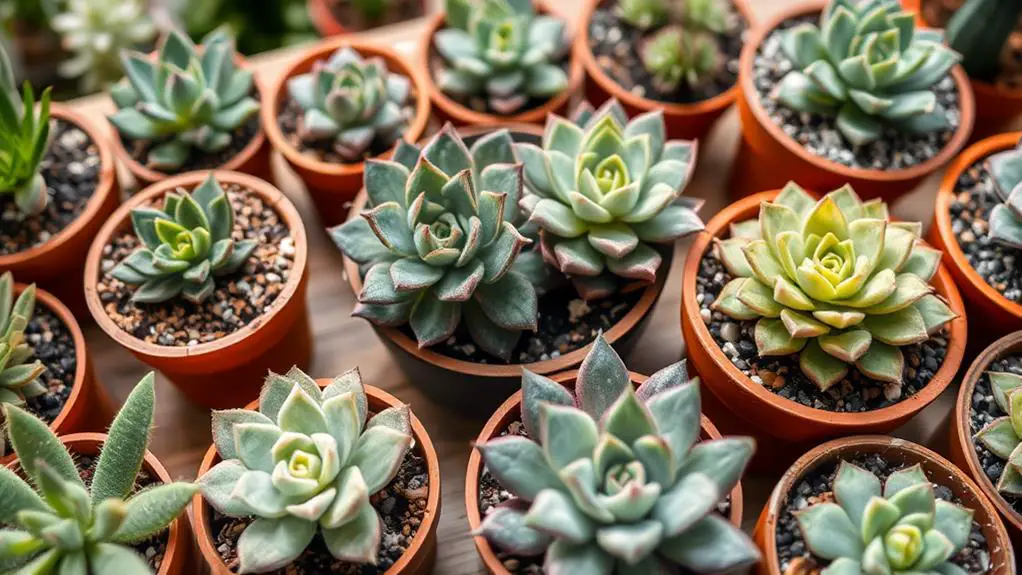
After ensuring your pots have proper drainage, it's equally important to contemplate the size of the pot.
Choose a pot diameter that's about 10% larger than your succulent's widest point. This provides space for growth and prevents root crowding. Fast-growing succulents like Aeonium and Echeveria may need pots 50% larger due to their rapid growth.
Consider the proper pot depth too. Shallow-rooted succulents such as Echeveria and Sempervivum thrive in pots 2-4 inches deep.
On the other hand, trailing plants like String of Pearls need deeper pots, around 6-8 inches.
Ensuring the right pot size and depth supports healthy root growth, reducing the risk of root rot and plant stress, and promotes overall plant stability and longevity.
Choose the Right Material

When choosing the right material for your succulent pots, think about breathability, drainage, and insulation.
Terra cotta and ceramic are great because they allow moisture to evaporate, while plastic pots need fast-draining soil to avoid water retention.
Concrete, wood, and metal have their pros and cons too, so consider weight and how easy they're to handle.
Material Breathability and Drainage
Choosing the right pot material for your succulents is vital to guarantee their health and longevity.
Using breathable materials like terra cotta or ceramic is important since they allow air circulation, promoting healthy root growth.
Make sure your pots have drainage holes to prevent water accumulation, which can lead to root rot.
Here are some options to take into account:
- Terra cotta pots: Great breathability and drainage.
- Ceramic pots: Breathable, but check for drainage holes.
- Concrete planters: Porous but heavy; make sure they've drainage.
- Plastic pots: Lightweight and versatile, but less breathable; use fast-draining soil.
- Wooden planters: Attractive but need sealing to prevent deterioration.
Insulation and Temperature Control
A succulent's well-being often hinges on its pot's ability to insulate and control temperature. Concrete planters offer excellent insulation, shielding roots from frost by soaking up and radiating heat.
Terra cotta and ceramic pots are breathable and porous, helping manage soil temperature and moisture, which is great for healthy growth.
Plastic pots, though less breathable, keep moisture longer and are good for outdoor use where temperature control can vary.
Wooden planters, if sealed right, look attractive and offer some insulation but should stay indoors to avoid moisture damage.
Metal pots can heat up fast in sunlight, possibly harming roots, so use them carefully outside.
Choose the right material to keep your succulents thriving!
Weight and Handling Ease
Opt for lightweight materials like plastic if you need to move your succulents around frequently. These materials are easier to handle compared to heavier options like ceramic or concrete.
Terra cotta and ceramic pots might look great but can be fragile and need careful handling. Metal pots are trendy, yet they can be heavy and heat up quickly, making them less ideal for outdoor use.
Wooden planters are both attractive and lightweight, but they need special care to avoid moisture damage.
Always verify any material you choose has proper drainage capabilities to prevent water retention.
- Plastic: Lightweight and easy to move
- Terra Cotta/Ceramic: Visually appealing but fragile
- Metal: Trendy but heavy and heats up
- Wood: Lightweight but needs treatment
- Concrete: Very durable but heavy
Match Aesthetics
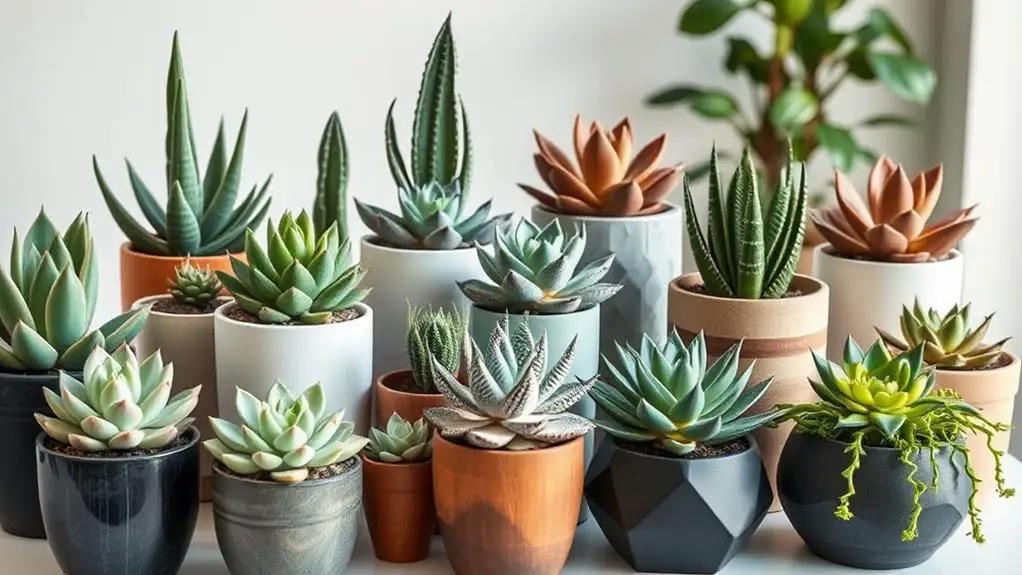
Often, creating a visually appealing succulent arrangement starts with selecting the right pots that match or complement the plants' natural hues. When choosing pots, consider colors that enhance your succulents.
For example, rust-red pots pair beautifully with Aloe castilloniae. Earth tones and warm shades like red, orange, and yellow can boost the overall aesthetics of your display.
Don't forget the texture of the pots. A pot with a rough surface can contrast nicely with smooth succulent leaves, adding depth.
Basic terra cotta or white pots are versatile and let your succulents' vibrant colors shine. Unique pottery designs from artisans also offer a chance to express your creativity, making your arrangements truly stand out.
Follow Potting Best Practices
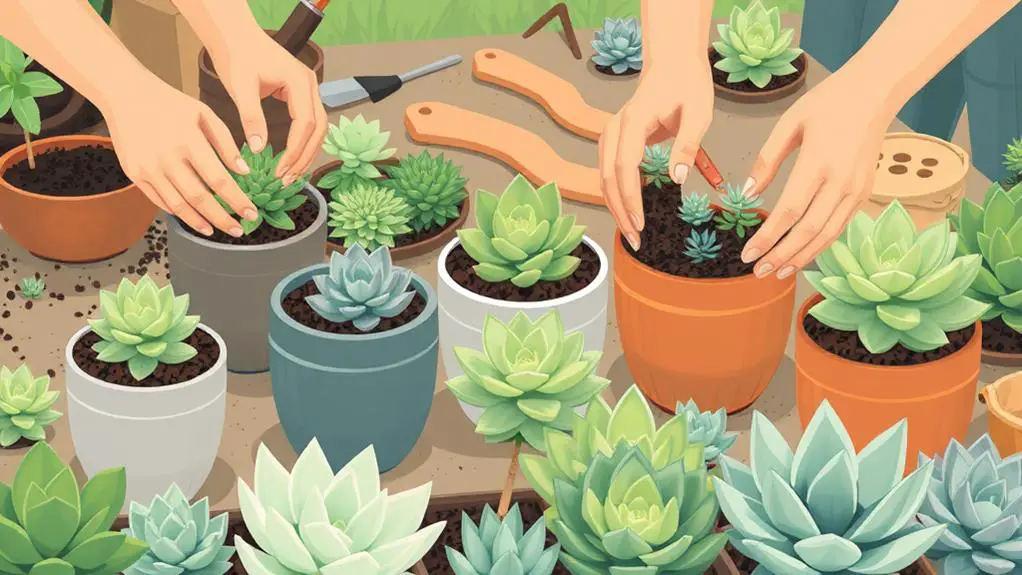
While selecting aesthetically pleasing pots is important, ensuring that your succulents thrive requires following potting best practices.
Always choose pots with drainage holes to prevent water accumulation and reduce the risk of root rot. Use an appropriate soil mix, like Espoma's Cactus Mix, to promote healthy drainage and moisture retention.
Regularly check soil moisture levels to avoid both overwatering and underwatering. Pot succulents at the correct height, with the soil level just below the pot's rim, to prevent water pooling.
Consider the mature size of your succulents when picking pot sizes to allow for ideal growth.
Here's a quick checklist for you:
- Drainage holes
- Appropriate soil mix
- Monitor soil moisture
- Correct potting height
- Allow space for growth
Utilize Community Resources
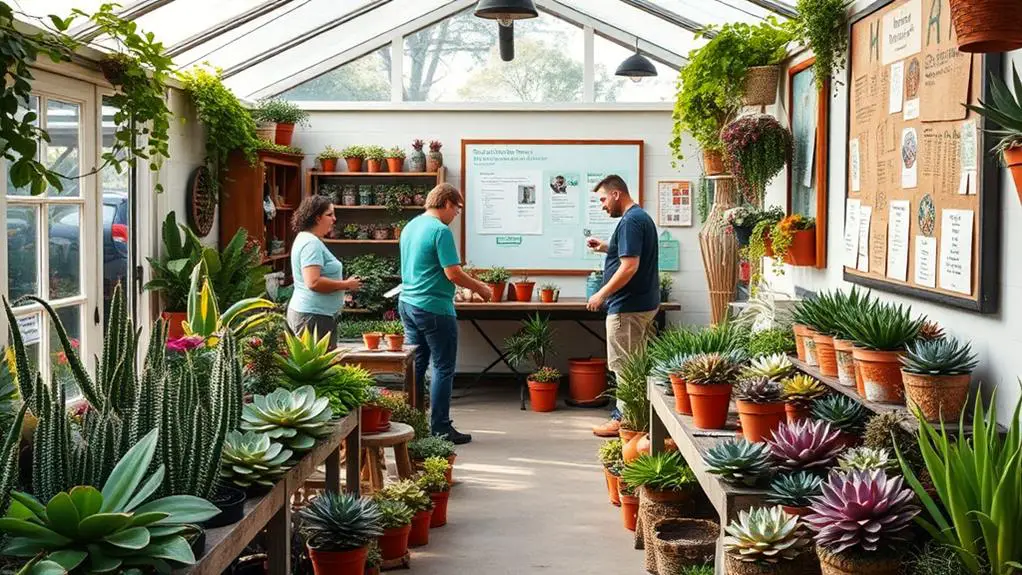
Immerse yourself in the vibrant world of succulent care by tapping into community resources.
Join Facebook groups dedicated to succulent care to share experiences and seek advice from fellow enthusiasts.
Follow Instagram accounts that focus on succulent displays for daily inspiration and visual guidance.
YouTube channels offer practical tutorials on potting techniques and strategies that are incredibly helpful for succulents.
Don't forget to utilize free online resources and articles for in-depth knowledge about succulent care and the best materials for pots.
Finally, participate in Cactus & Succulent Society Shows to discover collectible art pots and network with other plant lovers.
Embracing these community resources will enhance your understanding and success in succulent gardening.
Explore Innovative Options
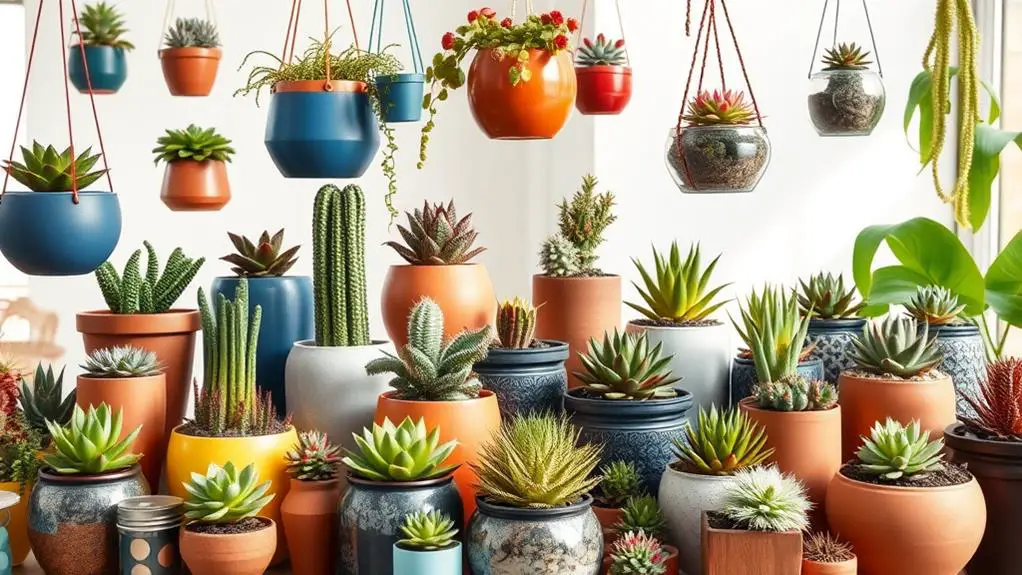
Connecting with the succulent community can open doors to innovative potting options that enhance both functionality and aesthetics.
When you explore innovative options, you'll discover exciting products that make caring for your plants easier and more fun. For example, Snappy Pots offer a unique magnetic planter with a strong magnet to prevent sliding and a liner to prevent water accumulation.
Here are some cool options to contemplate:
- Magnetic planters like Snappy Pots
- Self-watering planters to maintain moisture levels
- Interchangeable decorations for customization
- Eco-friendly materials like recycled plastics
- Creative shapes and designs for added charm
Frequently Asked Questions
Do Succulents Prefer Deep or Shallow Pots?
Succulents' pot preference depends on their root system. Shallow-rooted ones like Echeveria need shallow pots, while deep-rooted types like Agave prefer deep pots. Choose accordingly to guarantee their roots have enough space and prevent root rot.
How Do You Arrange Succulent Pots?
Arrange your succulent pots by using the "thriller, filler, spiller" concept. Place taller plants in the center, medium-sized ones around them, and trailing plants at the edges. Guarantee adequate spacing for airflow and healthy growth.
Do You Put Rocks in the Bottom of a Planter for Succulents?
You don't need to put rocks in the bottom of a planter for succulents if it has drainage holes. Focus on using well-draining soil instead. Rocks can trap moisture and potentially cause root rot if not monitored.
What Pots Are Best for Succulent Propagation?
For succulent propagation, use shallow pots or trays with drainage holes. Small plastic or terracotta pots work best, as they manage moisture well. Make sure pots are clean and use a well-draining soil mix to prevent rot.
Conclusion
You've got all the tips you need to pick the perfect pots for your succulents! Remember, good drainage and the right size and material are key. Matching your pots to your plants can make your garden look even better. Don't forget to check the soil moisture and keep learning from your gardening community. With these tips, your succulents will thrive, and you'll feel confident and happy with your beautiful plants. Happy gardening!

